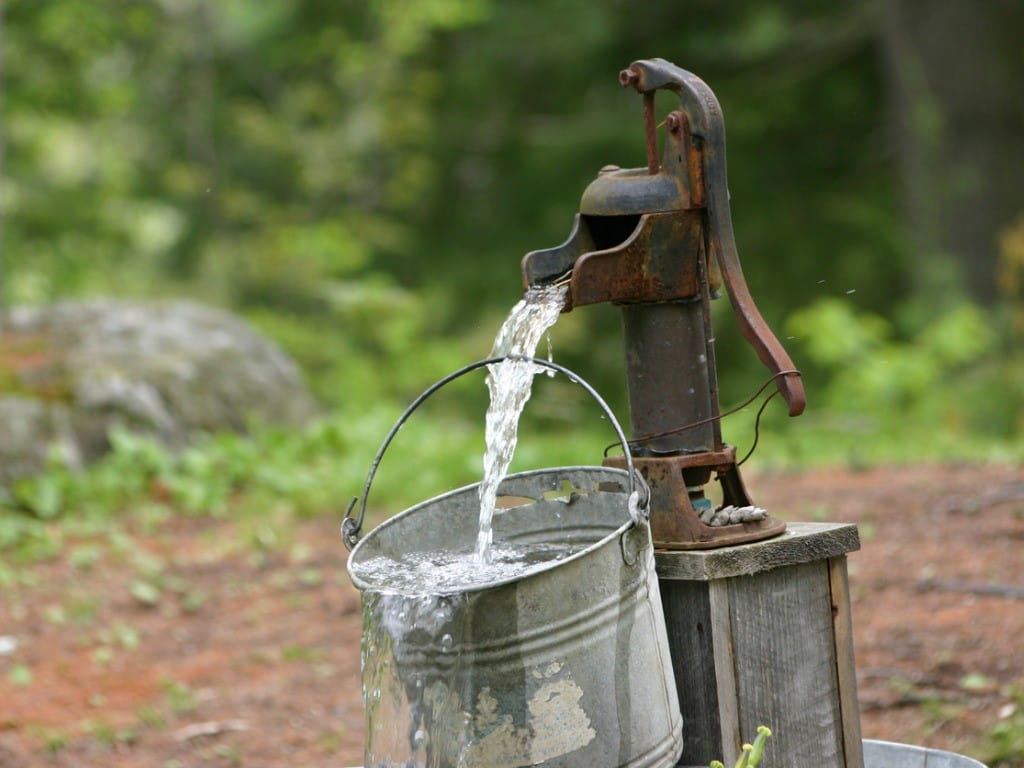Well Water Safety

The Bottom Line
Water from a private well can be threatened by numerous contaminants, either naturally or due to human activities. Many contaminants can have detrimental health effects. While the Safe Drinking Water Act ensures the safety of public water supply systems, the responsibility for ensuring the quality and safety of private well water falls on the owner.

The Full Story
Clean and safe drinking water is a privilege. For the vast majority of Americans, who obtain their water through a public water supply system, safe drinking water is ensured through the Safe Drinking Water Act. This means that it meets vigorous standards and complies with testing set by the US Environmental Protection Agency (EPA) for a wide range of possible contaminants. However, about 15% of Americans obtain their water from their private wells. If you are one of them, this means no water bill every month. But this perk comes with monumental responsibilities. It means you have to play the role of the EPA to make sure that the water you and your family drink, cook, and clean with is safe.
Existing data on the quality, safety, and maintenance of private wells reveal alarming statistics. For instance:
- The National Water-Quality Assessment Program of the US Geological Survey collected and tested water samples from 2,100 private wells from 48 states between 1991 and 2004 and found that one in five wells contained elevated concentrations of contaminants such as metals and nitrates.
- A review of calls to the Water Systems Council’s wellcare® Hotline during 2013 found that only 38% of private well owners had tested their well water or inspected their well during the preceding 12 months.
If you are a private well owner, here are three key focus areas to help safeguard against contamination and prevent illness:
Be aware of potential well water contaminants and their health effects.
Your well can be threatened by numerous contaminants. Some are found naturally in our environment, such as arsenic and radon, while others are due to human activities. The EPA provides a concise list of Potential Well Water Contaminants and Their Impacts. Another excellent source is the Centers for Disease Control and Prevention’s (CDC) Overview of Water-related Diseases and Contaminants in Private Wells. Contaminants can be unique to your geographic location (i.e., geology of the land) as well as your proximity to specific human activities such as farms where fertilizers or certain pesticides are used, constructions sites, and oil drilling or waste disposal stations. Health effects of these contaminants range from having little consequence to causing gastrointestinal illness and cancer.
Well water safety starts before the well is even constructed—it's location, location, location.
The location of a well is key to its safety. Making sure it’s a safe distance from possible contaminants like septic tanks or where chemicals are stored, making sure rain water flows away from it, and the nature of the land itself (e.g., whether it’s naturally rich in arsenic) are just a few examples of the importance of the location of a well.
Always use reputable, bonded, insured, and certified drillers and well pump installers. The National Ground Water Association provides a database so you can find ones near you.
Conduct regular maintenance activities and water quality testing.
Wells are not just "set-it-and-forget-it." They require regular maintenance. A maintenance check and water quality testing should be done at least annually and anytime an issue arises like a change in the taste, odor, color, quality, or pressure of the water, following a natural disaster, and during the sale or purchase of a home with a private well. Between the annual checks, regular visual inspections of the wellhead and surrounding area should be done so that potential safety concerns do not go unattended. To get started, review the following resources:
- Water Systems Council’s Well Water Testing and Contractors
- CDC’s Well Testing
- National Ground Water Association’s “How Do I Arrange for a Checkup?” and “How to Get a Test.”
Serkalem Mekonnen, RN, BSN, MPH
Certified Specialist in Poison Information
Poisoned?
Call 1-800-222-1222 or
Prevention Tips
- Have general knowledge of your well and its components.
- Be aware of potential well water contaminants and their health effects.
- Employ certified well contractors to construct and maintain your well.
- Conduct regular water quality testing and inspection of your well.
This Really Happened
A 3-week-old previously healthy baby girl was taken by her parents to an ER because she’d become excessively irritable and fussy. The parents reported that she’d turned “completely blue” and appeared to be short of breath.
The staff in the ER noted that the baby was cold to the touch and dusky in color. Her temperature was only 90°F. She was short of breath because her blood oxygen saturation was a low 85% (normal is 95% or higher). She was airlifted to a hospital that had a pediatric intensive care unit where it was discovered that the baby had a methemoglobin level of 91.2% (normal is less than 3%). Methemoglobin is a type of defective hemoglobin, which is the component in red blood cells responsible for carrying oxygen. This defective hemoglobin does not carry oxygen and causes your cells to suffocate. A level of 91.2% could be deadly. Fortunately, there is an antidote available and it was given to the child soon after arrival at the hospital.
The baby lived with her parents and grandparents on a dairy farm. She had been doing well on infant formula diluted with bottled water. However, about 2 days prior to her illness the family ran out of bottled water and began to use boiled water from their private well to dilute her formula. Water samples from this well were positive for the bacteria E. coli and had nitrate concentrations almost three times the upper acceptable limit. The nitrate-contaminated well water was the cause of the life-threatening methemoglobinemia.
The baby recovered and was discharged home 17 days later (from Knobeloch et al., 2001).
For More Information
Water well care: welcare® info sheets. Washington: Water Systems Council [cited 2021 May 31].
Well owner’s manual. Washington: Water Systems Council; 2020 [cited 2021 May 31].
wellcare® hotline: 888-395-1033.
Your one-stop private well water resource. Wellowner.org [cited 2021 May 29].
References
Knobeloch L, Proctor M. Eight blue babies. WMJ. 2001;100(8):43–7.
Poisoned?
Call 1-800-222-1222 or
Prevention Tips
- Have general knowledge of your well and its components.
- Be aware of potential well water contaminants and their health effects.
- Employ certified well contractors to construct and maintain your well.
- Conduct regular water quality testing and inspection of your well.
This Really Happened
A 3-week-old previously healthy baby girl was taken by her parents to an ER because she’d become excessively irritable and fussy. The parents reported that she’d turned “completely blue” and appeared to be short of breath.
The staff in the ER noted that the baby was cold to the touch and dusky in color. Her temperature was only 90°F. She was short of breath because her blood oxygen saturation was a low 85% (normal is 95% or higher). She was airlifted to a hospital that had a pediatric intensive care unit where it was discovered that the baby had a methemoglobin level of 91.2% (normal is less than 3%). Methemoglobin is a type of defective hemoglobin, which is the component in red blood cells responsible for carrying oxygen. This defective hemoglobin does not carry oxygen and causes your cells to suffocate. A level of 91.2% could be deadly. Fortunately, there is an antidote available and it was given to the child soon after arrival at the hospital.
The baby lived with her parents and grandparents on a dairy farm. She had been doing well on infant formula diluted with bottled water. However, about 2 days prior to her illness the family ran out of bottled water and began to use boiled water from their private well to dilute her formula. Water samples from this well were positive for the bacteria E. coli and had nitrate concentrations almost three times the upper acceptable limit. The nitrate-contaminated well water was the cause of the life-threatening methemoglobinemia.
The baby recovered and was discharged home 17 days later (from Knobeloch et al., 2001).
